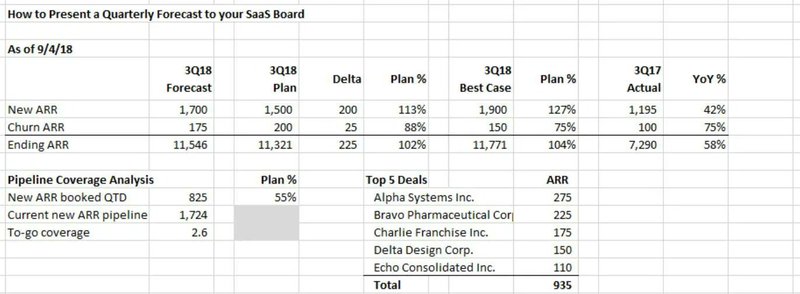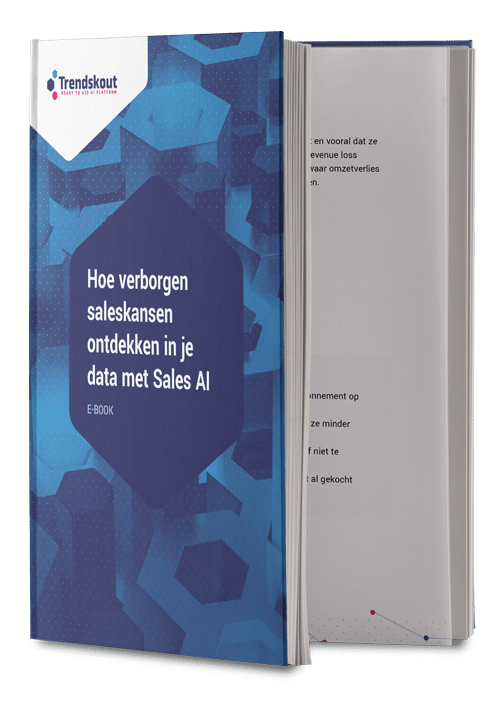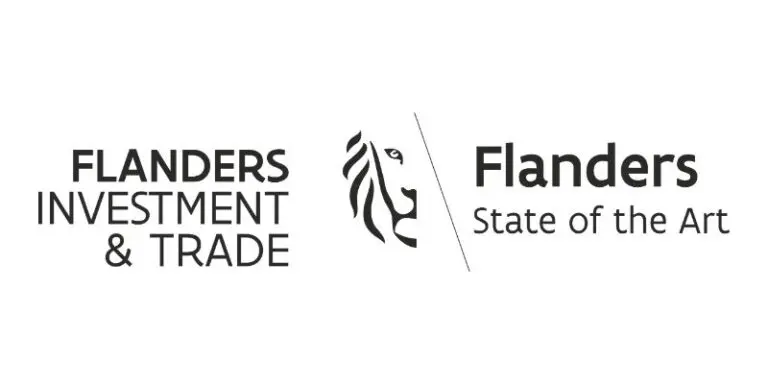
Making good sales forecasts with results can be learned. And there are a number of options for doing so. If you work in sales at a B2B company, you've almost certainly been asked your opinion on future sales. Like, "How much do you think you'll sell in the next quarter?"
Does it make sense? Do the rough estimates of many salespeople produce good sales forecasts? There are many ways to make forecasts: from gut feeling estimates to simple to very complex models based on mathematics and statistics. Some are simply better than others. Before we look at the different forecast options, let's address the following question:
Sales Forecasts: what are they?
What did you first think of when you read the word "sales forecasts"? Our guess is sales forecasts. And that is correct. But sales forecasts are just one of the many types of forecasts that are useful for sales. Think about it: which predictions about your B2B sales could make your job even easier?
Predictions such as "what price will your customer most likely accept" (dynamic pricing) or "which customer is likely to leave" (churn predictions)They save you from unpleasant surprises and give you time to act. Amazon has made another type of sales forecast a celebrity: the "cross-selling forecast".
We are sure that you are familiar with the following sentences: "other customers also bought...". or "you might also be interested in this...". The aim of cross-selling is to get a customer to buy another product in addition to the original one. Cross-selling accounts for more than 25% of Amazon sales. So you see, sales forecasts are not the only valuable predictions that can help sales.
How forecasts are made - the "human" option.
You would be surprised how many B2B companies forecast their sales through surveys of salespeople and through a good dose of gut feeling. That might be feasible if you have one or two salespeople on the job and offer a very small range of products. But when does it get really tough? When you have many customers or products, it is difficult to keep an overview.
Another bottleneck is detailed forecasts. A sales forecast is a number that includes total sales over a given period. But what if it goes deeper. Future sales per customer or product. Our experience is that "human" forecasts at this detailed level are no better than chance.
How predictions are made - the "statistical models".
To explain the principle behind these models, let's take one of the simplest ones to help: a linear function. A quick example: a customer has been buying €100 from you every month for a year. Then you can pretty much predict how much turnover you will make with this customer in the next three months. Not rocket science.
What was needed to make these sales forecasts?
- Historical data: the customer has always bought €100 in the last few months.
- Pattern recognition: you assume that the customer will maintain the "pattern" (€100 every month).
- Extrapolation: Based on this pattern, you calculate (100 € x 3) how much the customer will earn in 3 months.
Unfortunately, not many sales processes follow this straightforward pattern. Human behaviour in particular does not. And yes, purchases in B2B also count as human behaviour.
How can "mathematics" predict human behaviour?
By patterns in the past. Not as simple patterns as a linear function - but they are there, and the principle is similar (historical data, pattern recognition and extrapolation). Because purchases do not happen randomly. If you work in a wholesaler or an industrial manufacturer, you know that your customers already have certain regularities and preferences in their purchases.
- To name but a few:
- how often they buy,
- how much they buy,
- how much they have paid in the past,
- at what intervals they buy.
- And many more.
These are all criteria on the basis of which a forecast can be "built" for each customer. Which statistical model should be used depends on the purpose of the forecast. So, what do I want to know? Whether the customer is at risk of churn? Here you need to calculate the probability of churn. This can be done, for example, with the help of a probability tree.
What price could he accept? A price corridor per customer and product would have to be created here. As you can see, these projections are very time-consuming and cannot be done manually for hundreds of customers and products.
So how does it work?
Through the use of artificial intelligence, the quality of sales forecasts has increased enormously in recent years. The reason for this is that the algorithms behind them can incorporate very many characteristics into their forecasts. They are masters at recognising patterns in large data sets (machine learning). Similarly, the word "predictive analytics" (or specifically related to sales: "predictive sales analytics") has become established.
Also read more about the changing data analytics in the B2B sector!
Don't spend your time in manual Excel spreadsheets. The time of data analysis professionals is also valuable and limited. Automate sales forecasting through tools such as Trendskout. This way, you and your sales team can focus on your customers.

The minimum requirement for sales forecasts.
One thing must be clear. Forecasts - and therefore sales forecasts - are never 100% accurate. We cannot predict the future to the nearest degree because none of us knows that or has a crystal ball.
The aim of forecasting and all models behind it is to approximate future reality as closely as possible. To explain this, let us take Amazon again.
Do you remember the product suggestions "what else might interest you..."? Underneath, Amazon suggests different items to you. And every product you do NOT click on, is a false prediction. Quite a lot of wrong predictions, isn't it? If you only take into account a few individual predictions, yes. BUT over all, this Amazon suggestion algorithm is so good that it brings in ¼ of total sales!
So, what is the minimum requirement for a sales forecasting model? It must at least be better than chance. Amazon has about 500 million consumer products. So the minimum requirement for the Amazon algorithm is that these suggestions are better accepted than completely randomly offered products.
📊#Business Value Forecast by #AI type👇@Gartner_inc#ArtificialIntelligence #MachineLearning #Python#DataScience #innovation #IoT #Industry40 #DigitalMarketing #CyberSecurity #bot #coding #NodeJS #javascript #django #TensorFlow #devops #100DaysOfCode #Technology #programming pic.twitter.com/69xyDMUyIZ
- د. خلود صالح المانع | Dr Khulood Almani #MWC22 (@Khulood_Almani) October 3, 2021
What Trendskout does for your sales forecasts
With the Trendskout platform you can render your data at lightning speed. The platform switches between all possible models at an enormous speed. This gives you an unparalleled learning curve. Once the algorithm has been determined, it can be fine-tuned. All this is done on the basis of your datasets. After that short learning curve, we continue to optimise the output. Without having to recruit a data scientist. Without major financial efforts. With a maximum return.
Wondering how we can make Trendskout work for you? Book a free demo! In 30 minutes we show you the added value of our platform for your company, your sales, your turnover.

